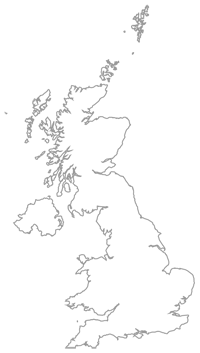March of the titan
AWS continues its march across the Infrastructure-as-a-Service (Iaas) world with new services coming out each month. When evaluating these services, Engineers and Architects are called to make difficult decisions that balance vendor lock-in, standards, likely future adoption, maintainability and cost.
Function over form
Crucially the need to deliver a product, quickly, reliably and scalably trumps the academic pursuit of the perfect tech or new-phoric love of the latest trend. If there’s an AWS service - read global, pay-as-you-go, massively scalable, low barrier to entry - that helps you to do what you’re trying to do online, then surely it’s worth evaluating.
Embrace the new
AppSync promises to do exactly that. Coupled with some good infrastructure-as-code, it reduces the complexity associated with setting up a GraphQL API and backing datastore to a few well ordered lines of Terraform code.
AppSync
GraphQL API
Let’s start with a basic type in GraphQL
# Docs
type Doc {
created: Int!
creatorAccountId: String!
id: ID!
body: String!
}
then a connection to read streams of them and some CRUD param lists
type DocConnection {
items: [Doc]
nextToken: String
}
input CreateDocInput {
creatorAccountId: String!
body: String!
}
input UpdateDocInput {
id: ID!
body: String
}
input DeleteDocInput {
id: ID!
}
We need a query to read the latest docs, mutations to update them and subscriptions to listen for changes:
type Query {
getLatestDocs(
creatorAccountId: String,
limit: Int,
nextToken: String
): DocConnection
}
type Mutation {
createDoc(input: CreateDocInput!): Doc
updateDoc(input: UpdateDocInput!): Doc
deleteDoc(input: DeleteDocInput!): Doc
}
type Subscription {
onCreateDoc(creatorAccountId: String!): Doc
@aws_subscribe(mutations: ["createDoc"])
onUpdateDoc(id: ID, body: String): Doc
@aws_subscribe(mutations: ["updateDoc"])
onDeleteDoc(id: ID, body: String): Doc
@aws_subscribe(mutations: ["deleteDoc"])
}
Finally we want a top-level schema to tell GraphQL about all these bits:
schema {
query: Query
mutation: Mutation
subscription: Subscription
}
Terraform
Next we’re going to need some Terraform code to provision it. First we create an AppSync API:
provider "aws" {
region = "eu-west-1"
alias = "ireland"
}
resource "aws_appsync_graphql_api" "grapple" {
name = "grapple-${terraform.workspace}-${var.project_name}"
authentication_type = "API_KEY"
provider = "aws.ireland"
}
At the time of writing AppSync wasn’t available in eu-west-2 (London) so we’re using eu-west-1 (Ireland). Now we need an API key to access it:
resource "aws_appsync_api_key" "api_key" {
api_id = "${aws_appsync_graphql_api.grapple.id}"
# API keys have a maximum validity period of 365 days
expires = "2020-01-04T13:00:00Z"
provider = "aws.ireland"
}
Once we’ve got an API, we can upload our new schema to it:
# upload schema from template file
data "template_file" "grapple_schema" {
template = "${file("${path.root}/../../appsync/grapple/schema.graphql")}"
}
resource "null_resource" "grapple_upload_schema" {
provisioner "local-exec" {
command = "aws appsync start-schema-creation --region ${var.aws_region_appsync} --api-id ${aws_appsync_graphql_api.grapple.id} --definition '${data.template_file.grapple_schema.rendered}'"
}
# trigger based on changes to the schema
triggers = {
file_changes = "${md5(data.template_file.grapple_schema.rendered )}"
}
depends_on = ["aws_appsync_graphql_api.grapple"]
}
The use of a trigger here means that whenever our API file changes locally, it will be re-uploaded to AWS in the next terraform apply.
To be continued
If you want to see more of this kind of material, just drop me an email and I’d be happy to expand it here.

Leave a comment